A Definitive Ranking of Every Wes Anderson Movie
The post A Definitive Ranking of Every Wes Anderson Movie appeared first on Consequence.
Welcome to Dissected, where we disassemble a band’s catalog, a director’s filmography, or some other critical pop-culture collection in the abstract. It’s exact science by way of a few beers. The time, we enter the quirky, warmhearted world of Wes Anderson. This article was originally published in 2018 and has been updated.
“I wouldn’t say that I’m particularly bothered or obsessed with detail.” — Wes Anderson
The rococo eccentricity and color palette of Grand Budapest Hotel say otherwise. As does the closet full of lovingly photographed and artfully uneven board games in The Royal Tenenbaums. Or the use of a Satyajit Ray score, dusted off and delicately placed in The Darjeeling Limited (in addition to the Louis Vuitton luggage custom made by Marc Jacobs). And what about the left-set placement of the kitten next to a record player in Moonrise Kindgom; the stage curtains and custom paintings in Rushmore; or the custom, bisected ship in Life Aquatic?!?
Sorry, this haranguing is getting in the way of the point: Wes Anderson may say he’s not obsessed with detail, but his gifts, his knack for those details, they just come naturally for the now-star director. They craft the worlds in which Anderson’s terrific films emerge. They make playgrounds for his flawed characters, his mighty scores and soundtracks, his serio-comic pastiches, and above all, his flawlessly designed images and artistry.
He is Lubitsch, he is Kurosawa, he is Martin Scorsese – he’s the best and quirkiest student to emerge from UT Austin’s film school with a well-curated library of inspiration behind his films, and we’re still obsessing over his work each day. Funny, touching, and obsessive-compulsively easy on the eyes, these are the films of Wes Anderson.
And just because our ranking doesn’t match yours, it doesn’t mean you can’t start one up yourself. Do it Max Fischer style. Just be sure to print it out in Futura.
— Blake Goble
11. Fantastic Mr. Fox (2009)
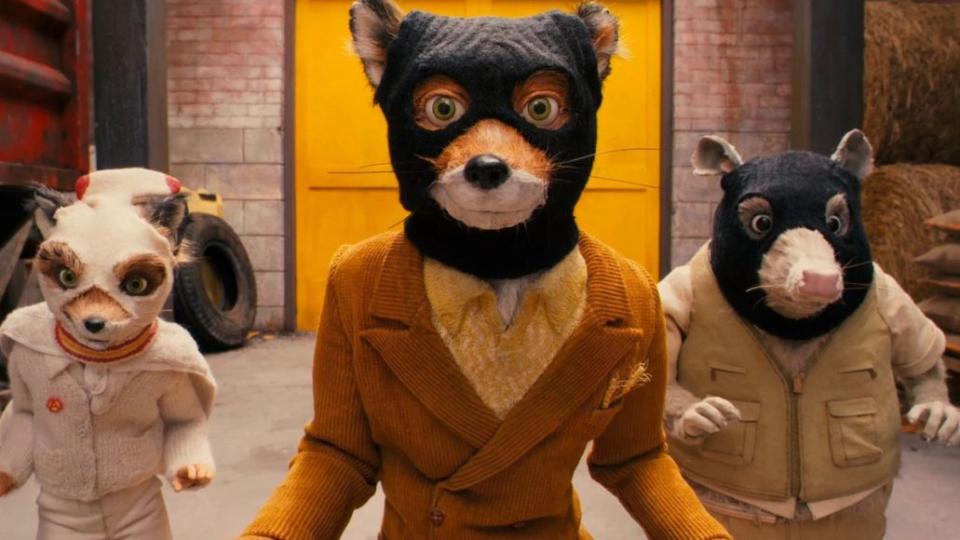
Fantastic Mr. Fox (20th Century Fox)
Runtime: 1 hr. 28 min.
Cast: George Clooney, Meryl Streep, Jason Schwartzman, Bill Murray, Willem Dafoe, Owen Wilson, Wallace Wolodarsky, Eric Anderson, Michael Gambon, Jarvis Cocker, and Hugo Guinness
How Is Bill Murray Involved?: He’s Clive Badger, Mr. Fox’s loyal attorney and best friend, husband to a fantastic pediatrician, and owner of a fairly spacious flint mine.
Plot: Adapted from the Roald Dahl classic, Fantastic Mr. Fox pits its cunning title character (Clooney) against the firepower of three human foils: the elephantine Boggis, diminutive Bunce, and glowering Bean. After Foxy’s desire for more specious real estate puts him in proximity of these three farmers’ hauls, his old lust for thieving reemerges (much to the disappointment of his wife, Streep’s Felicity).
Soon, his increasingly dangerous rivalry puts all of his fellow animals in the crosshairs (and distracts him from helping his son, Schwartzman’s Ash, through a serious case of cousin rivalry). Once said cousin finds himself in the farmers’ clutches, it’s up to Mr. Fox and his allies to save the boy, end the siege, and rediscover the familial joys only found by going straight.
It Is Beautiful, Steve (Soundtrack): Fantastic Mr. Fox marks the beginning of the Alexandre Desplat era of Anderson’s films. What a delightful start; filled with equal parts cartoon energy and oversaturated autumn color, themes like “Mr. Fox in the Fields” and “High-Speed French Train” capture the whimsy and awe of childhood longing with each plucked string. Elsewhere, Burl Ives is the master of ceremonies, with three contributions from his seminal 1959 record Burl Ives Sings Little White Duck and Other Children’s Favorites lending the film the quality of a dog-eared storybook.
How Much Kinks?: The Kinks took a powder for this one, as did most of the British Invasion (though, as always, you’ll find at least one Rolling Stones song; in this case, the well-used “Street Fighting Man,” which I’m sure Mick Jagger always intended to one day soundtrack a stop-motion brawl between three bulldozers and a family of foxes).
A Word on Fonts: Watch out, nerds. We’ve got a subtle-but-important change here. While Anderson continued his use of Futura on the film’s marketing materials, the actual font used within the film was (ready your fainting couches) Helvetica Bold! Score one for Max Miedinger and Eduard Hoffmann.
Best Doomed Love Affair: I’m all for Agnes and Kristofferson going steady (sorry, Ash), but between their youth and the eventual recovery of Kristofferson’s dad, their relationship does seem destined to wind up little more than a semester-long dalliance.
Most Problematic Fave: Other than perpetuating the stereotype of wolves as unknowable (and possibly French) badasses, there’s really not much to complain about.
Most Gratuitous Set Fetishism: Glowing with the golden warmth that only thousands of gallons of high-proof cider can provide, Farmer Bean’s cider cellar manages to feel inviting and ominous all at once. It’s even better when you realize that none of that glow comes from CGI effects.
Best Prop: While there are touches in the Foxes’ home that would be the envy of any dollhouse (particularly Ash’s train set and Felicity’s tiny moka pot), I want nothing more in the world than to own a full-sized replica of a whackbat.

Bob Gets the Spirit Award (Best Secondary Character): Kylie without hesitation. I mean, come on. They don’t give a cussing Titanium Card to just anybody, you know.
Verdict: When you’re adapting a work by an author as beloved as Dahl, there’s equal temptation to hew faithfully to the (rightly loved) source material and to create something that justifies its own existence. Anderson gets it right, sticking to Dahl’s narrative beats while deepening the story and its characters with liberally applied contemporary updates that feel hip and timeless all at once. He also revealed himself as one of the foremost stop-motion animators of the 21st century, a talent that helped earn the film a Best Animated Feature nomination at the 82nd Academy Awards (where it lost to Up).
Filled with welcoming warmth, a miniaturist eye for detail, and a reverence for old-fashioned fashions of filmmaking not quite yet dead and gone, Fantastic Mr. Fox may yet inspire the next generation of directors to follow in Anderson’s eccentric, exacting footsteps. If this is the least of the films on this list, you know that this is going to be a very, very good list.
— Tyler Clark
10. Bottle Rocket (1996)
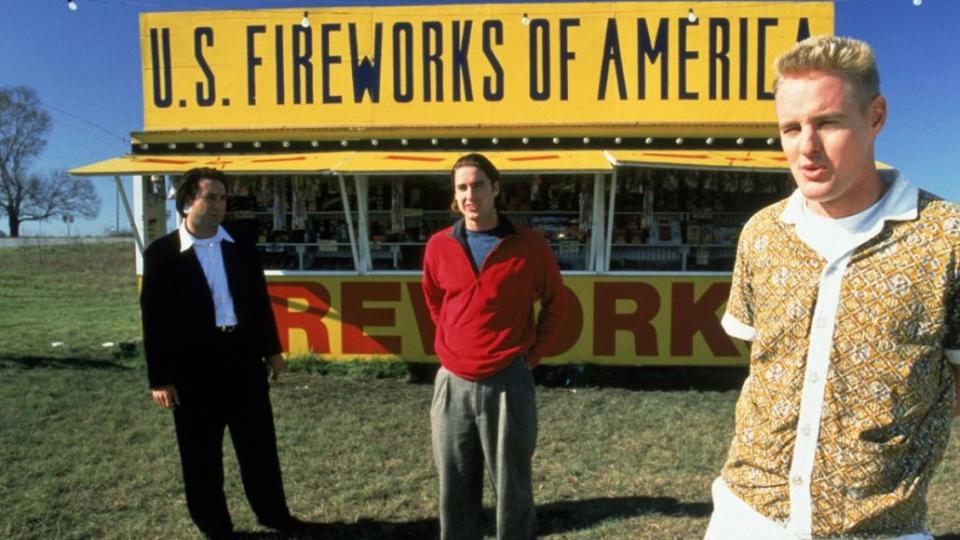
Bottle Rocket (Columbia Pictures)
Runtime: 1 hr. 31 min.
Cast: Luke Wilson, Owen Wilson, Robert Musgrave, James Caan, Lumi Cavazos, Andrew Wilson, and Kumar Pallana
How Is Bill Murray Involved?: For the one and only time in this entire list: he’s not! (Update: This streak ends in 2023.)
Plot: Would-be cat burglars Dignan (Owen Wilson) and Anthony (Luke Wilson) aren’t hardened criminals; mostly, they’re just looking for a way out of the mind-numbing suburban ennui of the Dallas Metroplex. Thanks to Dignan’s elaborate planning and almost-successful practice heists, the pair (along with their put-upon friend, the would-be pot farmer and getaway driver Bob) catch the eyes of some interested parties.
For Dignan, it’s Mr. Henry, a landscaping contractor and small-potatoes criminal kingpin. For Anthony, it’s Inez, the chambermaid at the group’s roadside motel hideout who might give him a non-criminal reason to live. Friendships are tested, loyalties questioned, and safe-cracking skills put to the test as the boys join Mr. Henry’s gang for the big robbery that might put them on the map (or land them in something worse than a voluntary stay at a mental hospital).
It Is Beautiful, Steve: In his first feature, Wes Anderson’s soundtrack game wasn’t yet at the legendary level it would eventually attain. His first collaboration with Mark Mothersbaugh produced a Tex-Mex grab bag of a score that remains pleasant without being terribly memorable. Bottle Rocket also mostly eschews the British Invasion influences that dominate many of Anderson’s films; the closest you’ll get here is a single track (The Rolling Stones’ “2000 Man”), which, along with essential tracks by Arthur Lee and Love, doesn’t even appear on the official soundtrack release. The best song that does? The Proclaimers’ “Over and Done With.”
How Much Kinks?: None! You’ll get the Stones and like it.
A Word on Fonts: Anderson’s affinity for Futura is apparent immediately; his favored font appears first in Bottle Rocket’s title card. After that, though, it only appears sparingly, adding to the generic vibe of the boys’ motel hideout and the institutional anonymity of Hinkley Cold Storage.
Best Doomed Love Affair: There really isn’t one; the film ends with Bottle Rocket’s only love story (between Anthony and Inez) still on the giddy upswing.
Most Problematic Fave: Though it ends up being mutual, Anthony’s initial attraction to Inez always felt a little creepy; even excepting the language barrier, the dude mistakes common courtesy for an invitation to follow her around while she works (without changing out of his bathrobe, no less) and then steals the picture of her sister out of her locket! Is that … is that courtship?
Most Gratuitous Set Fetishism: “Gratuitous” is the wrong g-word for this one. Try “grounded.” From the drab bookstore to the chintzy motel to the bar where Dignan gets decked, Bottle Rocket generally places its characters in settings that emphasize the feeling of lived-in Texas boredom. In the interests of completion, we’ll give the nod here to the the mid-century cool of Bob’s house; bet Futureman makes a mean highball.
Best Prop: There are a couple of low-key contenders for this one; the book of Roosevelt dimes drives home the oppressive suburban normalcy while the pharmacy pinball machine makes for some cool shots. However, the honor here goes to Dignan’s Honda minibike, whose half-mature impracticality really drives home its owners fascination with boyhood-style misadventure.

Bob Gets the Spirit Award: This category is named after him, so Bob Mapplethorpe is our winner, even if there’s not “a real air of mystery” about him.
Verdict: Wes Anderson’s first movie is also one of the few to feel rooted to its time period; you can see the through lines between this and the stylized crime of Pulp Fiction, the aimless slackerdom of Clerks, and the desperate longing of Trainspotting. If Anderson never quite transcends his contemporaries on this first try, he still manages to turn out a film that you wouldn’t have been disappointed to rent sight-unseen from a Blockbuster in 1997.
Even if he’d never made another movie, the film likely would’ve found cult fame thanks to the manic criminal optimism of Owen Wilson’s Dignan alone. As it stands, Bottle Rocket is instead a pretty good movie in a filmography filled with pretty great ones.
— T. Clark
09. Moonrise Kingdom (2012)

Moonrise Kingdom (Focus Features)
Runtime: 1 hr. 34 min.
Cast: Jared Gilman, Kara Hayward, Bruce Willis, Edward Norton, Bill Murray, Frances McDormand, Tilda Swinton, Jason Schwartzman, Harvey Keitel, Bob Balaban
How Is Bill Murray Involved? Along with Frances McDormand, Bill Murray plays parent to young Suzy, one half of the grand preteen romance. He speaks softly and carries a big ax.
Plot: Twelve-year-old Sam (Gilman) breaks free of Camp Ivanhoe and the guidance of the Khaki Scouts and Scoutmaster Randy Ward (Norton). More than any preteen adventure, he’s out there chasing pure love after meeting Suzy Bishop (Hayward), an equally whip-smart, eccentric 12-year-old who lives on the island on which the camp is located. Her parents, his compatriots, and every other adult in the vicinity are on the lookout to keep these crazy kids from running off into the wilderness, but love this young and raw is hard to beat.
It Is Beautiful, Steve: After working together on Fantastic Mr. Fox, Wes Anderson brought in Alexandre Desplat to compose for an equally vibrant and youthful tale. Another frequent collaborator, the wacky and playful Mark Mothersbaugh, added in percussion, as well as snippets of Benjamin Britten — a composer known for writing specifically for children’s voices.
The film’s vintage set screams the ‘60s, but rather than continue to indulge in The Kinks, The Creation, and the rest of the British Invasion, the film is rooted in a timeless youth and deep romanticism. The climactic scene of Sam and Suzy dancing and finally having their first kiss to Françoise Hardy does come straight from 1962, but the French tune similarly transcends time and age.
How Much Kinks?: The film is set just before the Davies brothers released their first songs.
A Word on Fonts: It seems super appropriate that reading the title of the film requires you to ride through the delightful twirls at the very beginning of the cursive M in Moonrise. It may not be Futura, but the golden yellow and curly cursive feel just as iconically Wes Anderson.
Best Doomed Love Affair: The whole island is against Sam and Suzy getting and staying together, not to mention that they’re 12 years old; that’s about as doomed as it gets. It’s hard to have a lot of faith that a pair of preteens have what it takes to keep a love affair alive whether or not Bill Murray, Frances McDormand, and Bruce Willis are trying to wrangle them, but considering how mature and twee these two are, maybe it’s not so doomed.
Most Problematic Fave: More than a few writers were uncomfortable with the sexual awakening scene of the two stars dancing in their underwear and making a physical connection. Not every Wes Anderson film has inspired headlines insisting that the movie “Is Not Sadomasochistic Kiddie Porn,” but then again capturing the wonder of first love is a … complicated? … thing.
Most Gratuitous Set Fetishism: The titular Moonrise Kingdom, a secluded cove that the love-driven pair plan to make their home, is a lush respite away from all the precise details of the usual Wes Anderson sets.
Best Prop: It’s hard to argue with Sam’s Khaki Scout uniform and raccoon-tail hat, but I’d certainly take one of those portable record players.

Bob Gets the Spirit Award: Everyone’s life should be narrated by Bob Balaban.
Verdict: Wes Anderson’s catalog is full of precocious kids struggling with a world disastrously low on precocity — or at least that thinks so, despite all of the precise choices made in every vintage coat button and handwritten note. But often those kids have already hit the wall and needed to face the real world (the Tenenbaum trio) or figure out how much of the world they can rule with their eccentric decisions (Max Fischer).
But Suzy and Sam are instead embracing their version of reality, despite attacking forces, to the point of trying to hide away from the world entirely and creating their own. What could be more true to young love? There are plenty of touching character choices throughout the adult population, but the two beating hearts at the core of this film cannot be denied, even to the point of a classically sweet happy ending.
— Lior Phillips
08. Isle of Dogs (2018)

Isle of Dogs (Fox Searchlight)
Runtime: 1 hr. 41 min.
Cast: Bryan Cranston, Koyu Rankin, Edward Norton, Bob Balaban, Bill Murray, Jeff Goldblum, Kunichi Nomura, Akira Takayama, Greta Gerwig, Frances McDormand, Akira Ito, Scarlett Johansson, Harvey Keitel, F. Murray Abraham, Yoko Ono, Tilda Swinton, Ken Watanabe, Mari Natsuki, Fisher Stevens, Nijiro Murakami, Liev Schreiber, Courtney B. Vance, Yojiro Noda, Frank Wood
How Is Bill Murray Involved?: The Chicago Cubs superfan gets to indulge his love of baseball in the role of Boss, the former mascot of the Kawasaki Dragons.
Plot: All of Japan’s dogs have been quarantined on an island made of garbage because they’ve contracted a terrible disease called canine flu — or so the story goes. But contagion won’t stop young Atari Kobayashi (Rankin) from heading to the trash heap in search of his beloved Spots (Schreiber), despite the condemnation of the boy’s uncle, the monstrous Mayor Kobayashi (Nomura), who seems to prefer cats anyway.
Once the boy crash lands on the island, his search and rescue mission spins out into a dozen different directions, helped along the way by an all-star cast of delightful dogs. But the authorities aren’t just about to let the boy find Spots and bring him back to Megasaki, so Atari, Rex (Norton), King (Balaban), Chief (Cranston), Boss (Murray), and Duke (Goldblum) fight back in honor of one of the world’s strongest relationships: a boy and his dog.
It Is Beautiful, Steve: After their success on Moonrise Kingdom and perhaps more importantly on Fantastic Mr. Fox, Wes Anderson and Alexandre Desplat came together again to bring out the childlike whimsy in the darkest corners and pain of being a kid. But rather than jangly folk in the countryside or orchestral vitality, the score instead leans on taiko drumming and amping the epic adventure quotient. Add in some ‘60s and ‘70s nostalgia — notably a stunning turn from the tragically underrecognized West Coast Pop Art Experimental Band — and you’ve got a characteristic Wes Anderson score with its own determined quirks.
How Much Kinks?: “Nothin’ in This World Can Stop Me Worryin’ ‘Bout That Girl”
A Word on Fonts: The film has a lot of characters not speaking each other’s languages, meaning this film was going to be rife with text from the word go. Plus, you’re going to need a lot of lettering to get all those names in the cast list. It might be at a slight angle, but that bright yellow sure looks familiar.
Best Doomed Love Affair: If we’re not counting the love a boy has for his dog — which in this case, the reunion of Atari and Spots often seems doomed, not to mention the growing love between Atari and Chief — then American exchange student Tracy’s hopeless crush on the boy hero would have to fit the bill.
Most Problematic Fave: When the news first started making the rounds that Wes Anderson had set his upcoming film in Japan, many were probably dreading the kind of cast list that followed shortly thereafter. The cast list brims with mostly very quirky white people, but the film makes great efforts to honor its Japanese setting and features a handful of strong performances from Asian actors.
Most Gratuitous Set Fetishism: Typically, this category finds Anderson appointing beautiful rooms and furnishing them with the furniture, wallpaper, and art of your dreams. This time, it’s piles of trash that dazzle the most. Every bag of squirming maggots and half-eaten garbage is so immaculately designed that they feel real. The glass sake bottle headquarters is a kaleidoscopic heaven.
Best Prop: As someone who missed out on the film’s SXSW premiere, I’m putting in an official request for one “PRO DOG” sweatband, please and thank you. If that’s not possible, I’ll happily settle for Atari’s personalized dog-kit, complete with shampoo, combs, and clippers. Or, Jupiter (voiced by the great F. Murray Abraham), one of the most well-respected royal dogs on Trash Island, and his flask conveniently wrapped around his neck for easy access.
not to be biased but we are a 100% pro dog account https://t.co/nJhsX2pvLM
— Isle of Dogs (@isleofdogsmovie) March 18, 2018
Bob Gets the Spirit Award: Tilda Swinton as Oracle, the film’s lone, small, psychic dog, is a scene-stealer. This may just be a biased opinion from a girl who grew up with the sweetest pug in the world, but isn’t that what this movie is all about?
Verdict: Going back half a decade, The New Yorker ran a piece detailing the tragic fates of pups in Wes Anderson films called “Does Wes Anderson Hate Dogs?” The answer? Isle of Dogs. Say it out loud and quickly. I’m not saying that the auteur necessarily made an entire film just to answer that question, but there’s so much care and consideration given to each and every unique canine in the film. You can watch the film for its professed respects to Akira Kurosawa and its dreamy respect for Japan, or you can just catch the wave of taut silliness, and either way you’ll come out delighted.
The dogs each have their own personality yet aren’t caricature, merely the idiosyncrasies and quirks of each individual voice actor. The animation is breathtaking, the pace and plotting compelling. Wes Anderson loves dogs and shows the deep meaning and reality that each individual — canine or human — encapsulates.
— L. Phillips
07. The French Dispatch (2021)
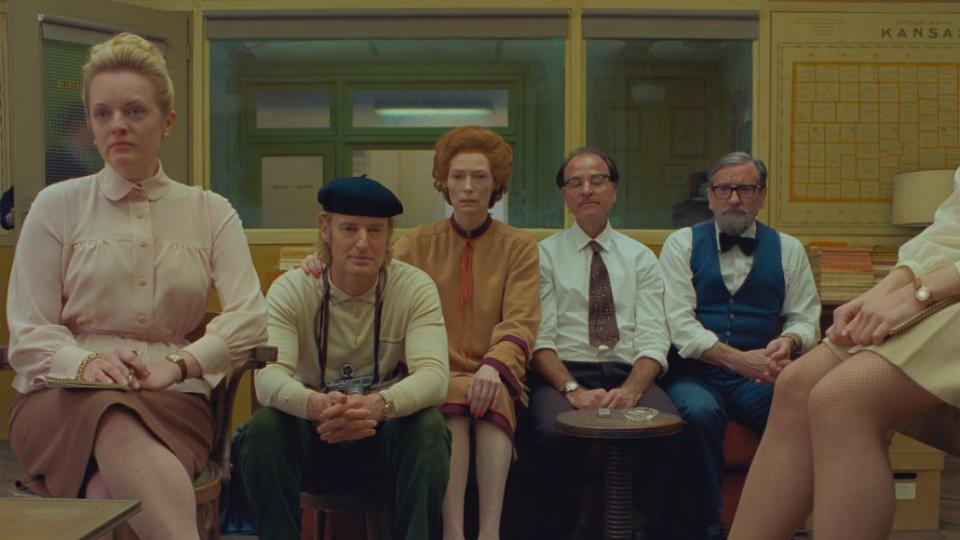
The French Dispatch (Searchlight Pictures)
Runtime: 1 hr. 48 min.
Cast: Jeffrey Wright, Frances McDormand, Timothée Chalamet, Adrien Brody, Benicio del Toro, Léa Seydoux, Bill Murray, Owen Wilson, Tony Revolori, Tilda Swinton, Stephen Park, Mathieu Amalric, Willem Dafoe, Elisabeth Moss, Jason Schwartzman, Edward Norton, Christoph Waltz, Liev Schreiber, Saoirse Ronan
How Is Bill Murray Involved? He plays the beloved if sometimes brusque founder and editor-in-chief of the title publication. His death is announced in the first scene — the first Murray character to buy the farm in an Anderson movie! — but he gets some beautifully understated Murray line readings as the film memorializes him.
Plot: As Arthur Howitzer, Jr. (Murray) dies in 1975, so too does The French Dispatch of the Liberty, Kansas Evening Sun, a New Yorker-like magazine, staffed mostly with American expats living in France, spun off from a Kansas newspaper owned by Howitzer’s father. The film is structured as a tour through what may be the magazine’s final issue, with an obit for Arthur, followed by a brief travelogue piece, and three feature stories, which comprise the bulk of the running time.
In the first, the writer J.K.L. Berensen (Tilda Swinton) recounts the strange career of Moses Rosenthaler (Benicio del Toro), an artist discovered in prison and pursued by a desperate art dealer (Adrien Brody). In the second, journalist Lucinda Krementz (Frances McDormand) profiles student revolutionaries, led by Zeffirelli (Timothée Chalamet), and getting perhaps over-involved in her subjects. And in the third, Roebuck Wright (Jeffrey Wright) recounts his experiences with Lt. Nescaffier (Stephen Park), a police officer and chef.
It Is Beautiful, Steve: How could Anderson’s France-set film not be scored again by Alexandre Desplat? His work here is somewhat less manic than Grand Budapest Hotel’s sometime-fever pitch; it’s more ceremonial and presentational. At times, it sounds closer to the music Mark Mothersbaugh composed for Anderson’s earlier films.
How Much Kinks?: None. The closest thing to a British Invasion here is the most prominent song being sung by former Pulp frontman Jarvis Cocker — who also played Petey in Fantastic Mr. Fox. Anderson has yet to delve into Pulp’s back catalog for soundtrack selections, but given the band’s Bowie influence and precise storytelling, perhaps he should consider it.
A Word on Fonts: The movie is framed by scenes at a magazine office; it is an absolute festival of fonts. Or it is in the framing scenes, anyway. Interestingly, the three main segments are a bit light on the mocked-up books, posters, and album covers that tend to dot Anderson’s work. The major artwork of the first segment is largely abstract, and the artist resists the kind of gallery trimmings that most Anderson characters would happily produce themselves. (See Richie Tenenbaum’s gallery-sized monument to his failure to develop as a painter.)
It’s almost as if Anderson was wary of overloading the movie with those particular details, wanting to stress elements that are either more tactile (like the ultimate paintings produced by the del Toro character are certainly that) or more ineffable (like the ideas about taste expressed by Lt. Nescaffier, passed along by Roebuck Wright).
But font enthusiasts can surely pore over the shots of the magazine’s cover, pages, layout, etc., to get their fix.
Best Doomed Love Affair: Though the movie makes some unfortunate indulgences in the trope of female journalists sleeping with their male subjects, the best doomed affair is between imprisoned murderer-artist Moses Rosenthaler and his muse, Simone (Léa Seydoux) — also a guard at his prison, improbably enough.
Their coupling is as intentionally unemotive as any Anderson-movie couple, but it also brings some welcome grown-up heat not seen in an Anderson movie… well, maybe not ever? It’s difficult to be sexy and funny at the same time, but Seydoux perched impossibly over a radiator for a nude portrait does the trick.
Most Problematic Fave: Probably either of the lady journalists who go to bed with their subjects — but this is also a Wes Anderson movie where one major segment stars a woman (McDormand) and another stars a man of color — Jeffrey Wright, giving one of the movie’s best and most affecting performances.
Some will probably find the treatment of the teenage political revolutionaries condescending, but gently goofing on French political activists from decades ago seems like a pretty minor infraction to us.
Most Gratuitous Set Fetishism: The entire section narrated by Owen Wilson, offering a quick profile of the French city of Ennui and its various oddball districts full of pickpockets, prostitutes, and street urchins, is dizzying in its ambition, as the sequence looks like it was created from scratch.
Best Prop: The magazine itself! Rumor has it that promotional copies of The French Dispatch are circulating IRL, though you may have to join the Academy to receive one.
Bob Gets the Spirit Award: Willem Dafoe has a cameo-size role as a prisoner stuck in a cage, looking growly. In other words, the part he was born to play!
Verdict: The French Dispatch makes an admirable attempt to top Anderson’s stop-motion movies and The Grand Budapest Hotel for the title of Most Wes Anderson movie; the sheer number of impeccably outfitted and framed characters in various faux-French environments assures that fans will not be disappointed by the volume of stylization at play here.
But, as usual, there’s more to this movie than a bunch of fussily detail-oriented design work — and there’s more to the story than a simple hit-or-miss anthology structure. Though some segments are invariably better than others (the middle story, about the student revolutionaries, is the weak link if only because it’s less hilarious than art dealers and less touching than the police chef), they also interlock thematically.
If one function of a highbrow magazine is supposed to be culture curation, bringing these fake magazine stories to life becomes a treatise on creativity — on how we try to communicate our passions, whether it’s through unruly paintings, typo-filled pamphlets, new tastes, or, yes, magazine articles, even when various systems of expression reveal themselves as imperfect.
Though a few bits here and there don’t work — there’s an animated interlude that falls flat — this is a lovely, thoughtful, yet frequently hilarious movie.
— Jesse Hassenger
06. Asteroid City (2023)
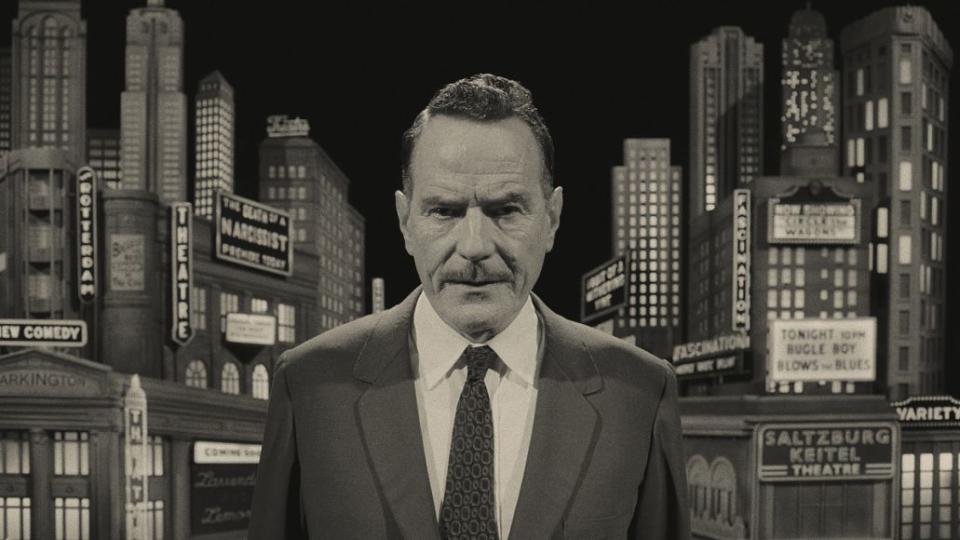
Asteroid City (Focus Features)
Runtime: 1 hr. 45 min.
Cast: Jason Schwartzman, Scarlett Johansson, Tom Hanks, Jeffrey Wright, Tilda Swinton, Bryan Cranston, Edward Norton, Adrien Brody, Liev Schreiber, Hope Davis, Stephen Park, Rupert Friend, Maya Hawke, Steve Carell, Matt Dillon, Hong Chau, Willem Dafoe, Margot Robbie, Tony Revolori, Jake Ryan, Jeff Goldblum
How Is Bill Murray Involved? For the first time since Bottle Rocket, he isn’t! Due to an unfortunately timed case of COVID, Murray had to sit out this film; the role earmarked for him was ultimately played by Steve Carell.
Plot: There’s a story within a story here, as a troupe of actors (led by director Adrian Brody) dramatize the story of Asteroid City, a 1955 television play about a small desert town that witnesses an unexpected extraterrestrial event.
It Is Beautiful, Steve: Alexandre Desplat once again delivers an elegant score, notable for its rhythmic chiming that invokes the sound of film running through a camera, or the clattering of typewriter keys — all too fitting for the self-referential nature of the narrative.
How Much Kinks?: In staying true to the film’s time period, The Kinks are not present on this soundtrack — which is fitting, given that in 1955, brothers Ray and Dave Davies were, respectively, 11 and 8 years old. Instead, the soundtrack includes Slim Whitman, Bob Wills & His Texas Playboys, Bill Monroe & His Blue Grass Boys, and Roy Rogers & The Sons of the Pioneers — aptly enough, given the presence of singing cowboy Montana (Rupert Friend).
A Word on Fonts: The bold typeface of the title is showcased prominently in the signage throughout the film, most especially on the sign announcing the name of the town. It’s not Anderson’s first sans-serif font choice, but it is a fresh addition to the Anderson Font Canon.
Best Doomed Love Affair: One of the film’s best threads is the slow-burn romance between Midge (Scarlett Johansson) and Augie (Jason Schwartzman) — as the residents of the town are quarantined following the appearance of an alien (Jeff Goldblum), they develop a flirtation through the bathroom windows of their respective cabins. While Anderson leaves the consummation off-screen, the connection the two characters develop from a distance still has plenty of resonance, with an ending that’s less tragic and more bittersweet — especially since the door is left open for them to meet again in the future.
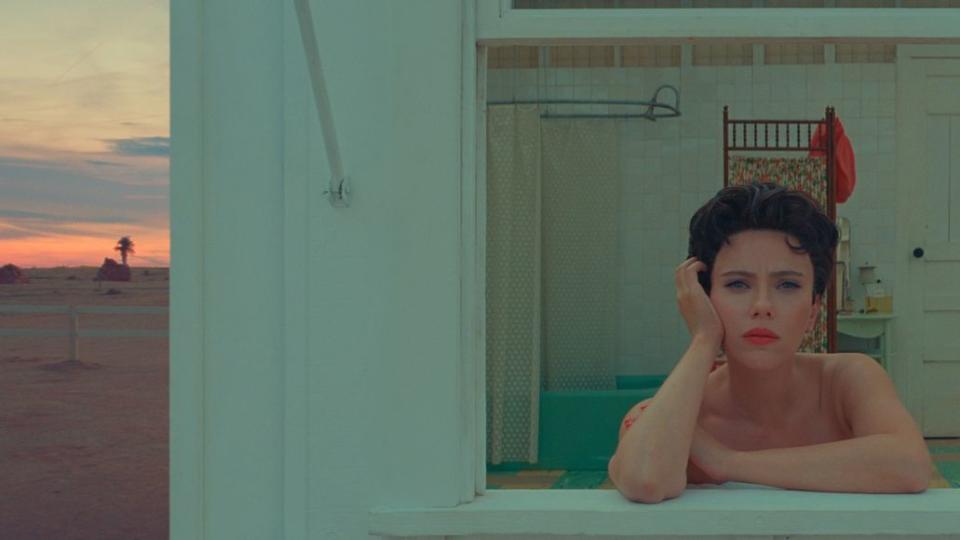
Asteroid City (Focus Features)
Most Problematic Fave: Adrian Brody, as the director of the play within a play, is in the middle of a divorce, obsessed with his work, and also appears to be a bit of a womanizer — he is one hundred percent the kind of guy you’d warn your friends away from dating. He is also one hundred percent the kind of guy where, if your friend told you she was dating him, you’d say, “Yeah, I get it.”
Most Gratuitous Set Fetishism: The town of Asteroid City is perhaps Anderson’s tour de force production achievement, built to feel like a real small town, and bringing with it that contained yet sprawling feel which comes when you’re out in the desert. That said, one black-and-white scene set in a train car brings with it an impressive amount of design, really capturing the claustrophobic quarters.
Best Prop: All of the Junior Stargazers bring some fantastical inventions to the desert, but c’mon, this has to go to the freaking ray gun. Okay, the jet pack is also cool. But… a ray gun!
Bob Gets the Spirit Award: With a large ensemble cast like this one, pretty much everyone is a supporting character, and an intriguing one. However, Tilda Swinton’s Dr. Hickenlooper makes a memorable impression, with Swinton fitting a lifetime of choices and regrets into one quiet line about not having children.
Verdict: While The French Dispatch was packed with Anderson-style charm, it felt a bit like the director was operating on autopilot, making Asteroid City all the more refreshing. Operating on two different levels of reality gives Anderson the opportunity to not just play in the realm of science fiction for the first time, but offer up a degree of meta-commentary not just on his own creative process, but the act of storytelling as well.
Not every member of the mammoth ensemble gets much in the way of screen time, with appearances from Jeffrey Wright, Willem Dafoe, and Edward Norton left feeling more like glorified cameos than real performances, and at times, the film feels a little aimless, drifting from narrative to narrative. But there’s clear evidence here of Anderson trying to step outside of his comfort zone, not only leading to one of his most intriguing films in years, but inspiring interest in whatever comes next.
— Liz Shannon Miller
05. The Life Aquatic with Steve Zissou (2004)
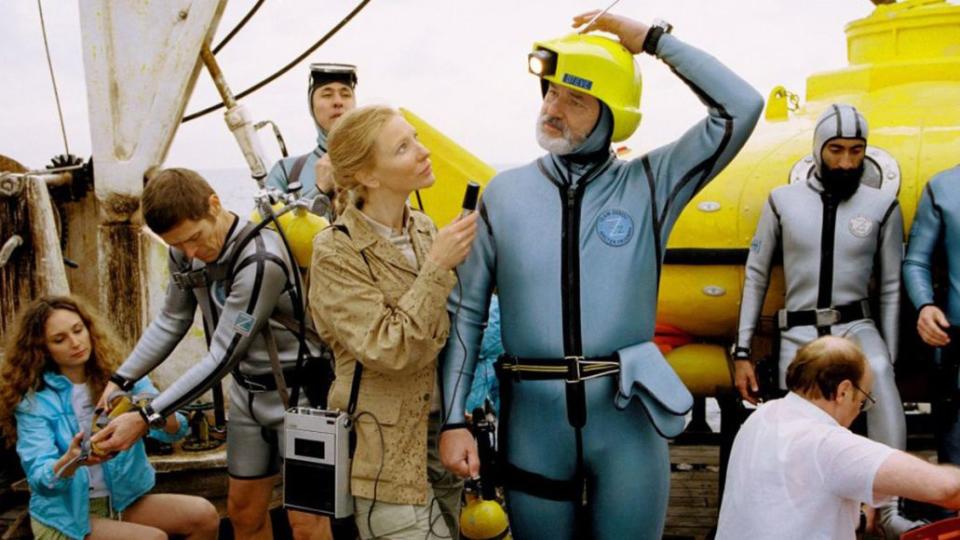
The Life Aquatic (Touchstone)
Runtime: 1 hr. 58 min.
Cast: Bill Murray, Owen Wilson, Cate Blanchett, Anjelica Huston, Willem Dafoe, Jeff Goldblum, Michael Gambon, Bud Cort, Noah Taylor, and Seu Jorge
How Is Bill Murray Involved?: As the title character: an insecure, past-his-prime explorer who just wants to recapture past glories, sleep with women he’s too old for, and possibly blow up an endangered shark with dynamite. For revenge.
Plot: After his latest nature documentary ends with audiences bored and his best friend eaten, Captain Steve Zissou and his loyal crew of misfits set out on a revenge-minded shark hunt that might also help him rekindle the stardom that once earned him is own deal with Adidas. Along the way, he contends with obstacles both material and interpersonal.
And then there’s Ned Plimpton (Wilson), the Air Kentucky pilot and lifelong Team Zissou fan who believes himself to be Steve’s long-lost son, whose arrival upsets the team’s erratic-but-comfortable orbit. As the hunt for the jaguar shark intensifies, Zissou has to grapple with the man he’s been, the man he is, and the man he might yet become. Oh, and pirates. There are also pirates.
It’s Beautiful, Steve: The Life Aquatic marks the last hurrah for Mark Mothersbaugh, and it’s a good one; according to a 2016 interview with Little White Lies, after Anderson asked him what kind of synthesizers might be found among the outdated equipment of the Belafonte, Mothersbaugh went to his basement, pulled out some old Devo classics, and proceeded to knock out a few themes (particularly “Ned’s Theme Take 1” and “Ping Island”) steeped in pitch-perfect shabby retrofuturism.
Mothersbaugh’s best work with Anderson also stands alongside Seu Jorge’s now-famous MBP adaptations of David Bowie’s greatest hits (the man himself was a fan, too). Bowie’s own voice is also well-used; there’s an entire generation of hipsters unwilling to admit that they heard “Life on Mars?” for the first time thanks to this movie.
How Much Kinks?: Zilch. This one belongs to the Thin White Duke.
A Word on Fonts: Anderson’s love of Futura blossomed fully in The Royal Tenenbaums, and the fruits of that sans-serif obsession remain on display in The Life Aquatic. Though the font’s familiar, there’s still a twist; The Life Aquatic makes extensive use of Futura Inline, whose outline-style letters give each appearance an air of antique mystery and fragility.
Best Doomed Love Affair: Ned and Jane, the lonesome pilot and the pregnant journalist both in search of a new way of looking at fatherhood. Their budding romance’s tragic end is gutting; to paraphrase not-Hemingway: “For sale: self-addressed stamped envelopes. Used once.”
Most Problematic Fave: Steve Zissou is a terrible boss and treats women like shit; any money that he made would’ve probably been taken in Anne-Marie’s justifiable workplace harassment lawsuit. Also: he’s waaaaaay more homophobic than you remember; while lines like “Bull dykes can get pregnant” and “How could you lay that slick faggot?” may have been intended to showcase Zissou’s general boorishness in 2004, they feel way more record-scratchingly cruel today.
Most Gratuitous Set Fetishism: “Let me tell you about my boat.” With those seven words, Steve Zissou introduces audiences to his team’s ship and Anderson’s heretofore most elaborate set. Arranged like a literal diorama, the ship blows up Anderson’s attention to minute detail into an exquisitely explorable size.
Best Prop: The official Team Zissou Adidas sneakers, which inspired countless DIY how-to guides in the spring of 2005 and a criminally limited official release in the summer of 2017.

Bob Gets the Spirit Award: Bill Eubell: bond company stooge, Tagalog speaker, and unexpected team player.
Verdict: As Wes Anderson’s first film after the hipster triumph of The Royal Tenenbaums, The Life Aquatic suffers by comparison; while Steve and Ned’s fraught feelings about fatherhood and legacy resonate on some level, the emotion often takes a backseat to the pair’s picaresque adventures. Plus, Zissou’s eventual redemption is never quite enough to get past his own prickly unpleasantness.
However, what the film lacks in story, it makes up for in world-building; blessed with the biggest budget of his career, Anderson created an irresistible, hyper-detailed reality that brings together the scientific awe of Jacques Cousteau films, the whiz-bang action of Johnny Quest shorts, and the madcap energy of Pee-Wee’s Playhouse. There’s a reason you still see Team Zissou Halloween costumes every year and there’s still a cottage industry dedicated to producing replica props from a 14-year-old box-office flop: Anderson’s obsessiveness created a reality we all want to explore.
— T. Clark
04. The Grand Budapest Hotel (2014)

The Grand Budapest Hotel (Fox Searchlight)
Runtime: 1 hr. 39 min.
Cast: Ralph Fiennes, Tony Revolori, F. Murray Abraham, Mathieu Amalric, Adrien Brody, Willem Defoe, Jeff Goldblum, Harvey Keitel, Jude Law, Bill Murray, Edward Norton, Saoirse Ronan, Jason Schwartzman, Tilda Swinton, Tom Wilkinson, Owen Wilson
How Is Bill Murray Involved?: Ah, Monsieur Ivan! Good fellow to Monsieur Gustave and member of the prestigious Society of the Crossed Keys. Slick moustache, too.
Plot: The name’s Gustave (Fiennes). Monsieur Gustave, proprietor, wooer, and all-round beacon for the famed Grand Budapest Hotel. Inspired by the writings of Stefan Zweig, the films of Lubitsch and Tati, and seemingly the comfortable popularity of millennial pink, The Grand Budapest Hotel is a dizzying comedy of hotel management, war, romance, sex, and paintings.
It Is beautiful, Steve: Alexandre Desplat netted himself his first Academy Award for his delirious and touching score. But first, the balalaika. Get acquainted with this Russian string instrument quickly. Plucky, melodic, nostalgic, the triangular string instrument was the core sound of choice by Wes Anderson and music supervisor Randall Poster, and they, along with Desplat, assembled 35 balalaikas for the orchestra, and the sound is simply beautiful.
Equally fast and boisterous and comedic, yet haunting, nervous, and old-fashioned, Desplat’s score is something else. And it was proof positive of the director’s knack for eclectic sounds while giving Desplat some of the finest work of the composer’s still-growing career. If only more acoustic bros would pick up a guitar and say, “Now, here’s ‘Moonshine’ from The Grand Budapest Hotel.”
How Much Kinks?: Zero times, alas. But let’s play Devil’s advocate for a second and imagine what “Dedicated Follower of Fashion” might sound like over, say, a montage of the delicate Gustave readying himself for a day’s work and mannered debauchery. Maybe that’s on-the-nose, but it could work, no? Hire me as a music supervisor, please, Wes Anderson.
A Word on Fonts: Archer, Beaufort, and FF DIN are among the fonts utilized in Grand Budapest Hotel. Ha, see? Anderson’s not a Futura fetishist, but just a plain, old, nitpicky font aficionado. (That’s why your Futura parodies will never be as good as the real thing.) Anyways, ARCHER only costs you about $230 on typography.com right now if you set it up for one computer only. What? The design nuts want to know!
Best Doomed Love Affair: Agatha and Zero. Sigh. Such young love, and tragic circumstances. But that’s another story. For another time.
Most Problematic Fave: People forgive the fantastical history and heightened reality because Grand Budapest works like a pastiche. European mish-mash you say? Again, it’s farce, so Anderson is able to save a lot of face.
Most Gratuitous Set Fetishism: I mean, Jesus the pink on this thing. Pink pastries from Mendl’s. The shocker pink façade of the hotel itself. Pink fonts, pink luggage, just, the rosy-hued filtering on all of Robert Yeoman’s warm and bright cinematography. The book cover of the story running the movie itself? It’s pink, baby.
Best Prop: Do baked goods count as props? The Mendl shop sweets are double, hell, quadruple-tap photogenic. And edible-looking, too!

Bob Gets the Spirit Award: Madame Céline Villeneuve Desgoffe, played by Tilda Swinton. One, she was dynamite in the sack – and she was 84. Two, I don’t know what sort of cream they put on her at the morgue, but I want some.
Verdict: Perhaps one of the finest works of nostalgia ever filmed, Anderson entered a new realm of comedy with The Grand Budapest Hotel. There’s an undercurrent of lament, of pity for the non-white, non-straight, non-classically normative faces and attitudes in Wes Anderson’s 2014 movie that’s made the effort so appealing to so many. And it’s just beneath the affectionately dainty façade, awesome gags, and all-time one-liners. (Has there been a better delivery of a line than Fiennes’ “Oh, fuck it” in recent memory?)
But again underneath all that pink and quirk is a living, breathing yarn about loss and memory. Anderson became an Oscar contender with this one. And like all his best efforts, it’s easily re-watchable, pleasingly visual, howlingly funny, loaded with amazing characters, and placed on the back of a charismatic and immensely watchable lead, darling.
— B. Goble
03. The Darjeeling Limited (2007)
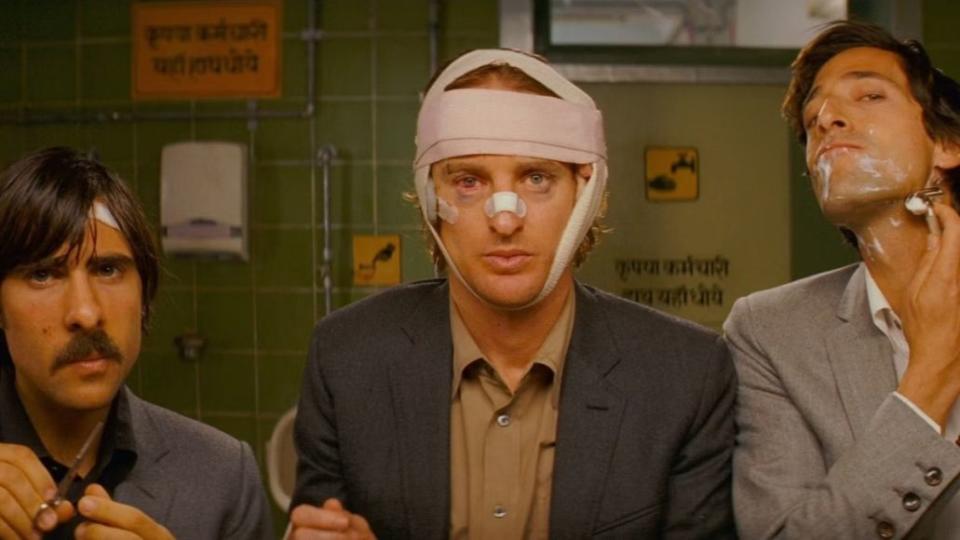
The Darjeeling Limited (Fox Searchlight)
Runtime: 1 hr. 31 min.
Cast: Owen Wilson, Adrien Brody, Jason Schwartzman, Amara Karan, and Wallace Wolodarsky
How Is Bill Murray Involved?: Almost as a good-luck totem. As Adrien Brody rushes to reach the titular train, the flummoxed “Businessman” just misses. Sure he’s in the film, keeping the streak alive … but just barely.
Plot: Brothers Francis (Wilson), Peter (Brody), and Jack (Schwartzman) Whitman reunite on a journey of spiritual self-discovery aboard a train through India after not having seen each other since their father’s funeral a year prior. They each bring their own reservations and baggage (both literal and figurative), but the quest tests exactly how strong the pull of family can be despite distance, difference, and difficulty. Stolen passports, a will-they-won’t-they love affair, a daring river rescue, and more arise along the way, but brotherhood drives the train along the way.
It Is Beautiful, Steve: The soundtrack blends Wes Anderson’s traditional love of ‘60s rock (particularly of the British Invasion) and equally classic Indian soundtracks, with a few drops of classical curlicue from Debussy and Beethoven to stitch everything together. Mark Mothersbaugh gets left behind like Bill Murray, marking the first time the Devo frontman didn’t contribute to one of Wes Anderson’s films.
How Much Kinks?: Three, and they’re some of the Davies’ best songs. The tearjerking “This Time Tomorrow” leads the way, the equally powerful “Strangers” hits in the middle, and “Powerman” amps things up near the close.
A Word on Fonts: The name of the train shines like a beacon on the tail-facing sign, and wouldn’t you know it: it’s a chunky sans serif in blue and yellow. The gaps in the text are a little rough around the edges, but it’s close enough to the Anderson standard.
Best Doomed Love Affair: Jack got on the train pining after his ex-girlfriend (Natalie Portman, featured more prominently in a pre-release short), but his fling with train stewardess Rita is equally doomed, though sweetly so.
Most Problematic Fave: Anderson has a long history of precocious, upper-class white people having their own struggles, and setting some of those same struggles in the midst of the Indian countryside got its fair share of eyebrows raised. But then the brothers do have a genuine interaction with less fortunate people, and we see a bit of village life. The Rita-Jack romance is similar to Bottle Rocket’s near-non-verbal love affair, but…
Most Gratuitous Set Fetishism: The surreal climactic scene in which Anderson pans across the train’s cars, revealing compartmentalized scenes ranging from the reality of the train to Whitman family events happening worlds away, is a showstopper.
Best Prop: Saying “the train” is probably a little too much, so: The monogrammed luggage is such an obvious, nail-on-the-head symbol, but when treated as carefully as Anderson is wont to do makes it shine.

Bob Gets the Spirit Award: Waris Ahluwalia’s Chief Steward is both a constant reminder of the seriousness of the journey the Whitmans have signed up for and a delightful specter of constant frustration at their inanity.
Verdict: This movie covers about as much ground as the train itself, wandering and questing far and away from the theoretical central plot. For a film set in large chunks on a train car, there is a preponderance of characters and themes. And for Wes Anderson, known for fussiness and precision, the sets and scenery range equally far and wide. The three brothers vary drastically in appearance and performance, and yet each one carries a winning charm. But isn’t that just the way with families? Nothing ever seems to work exactly the way it should, and yet it all remains inextricably tied together.
— L. Phillips
02. The Royal Tenenbaums (2001)
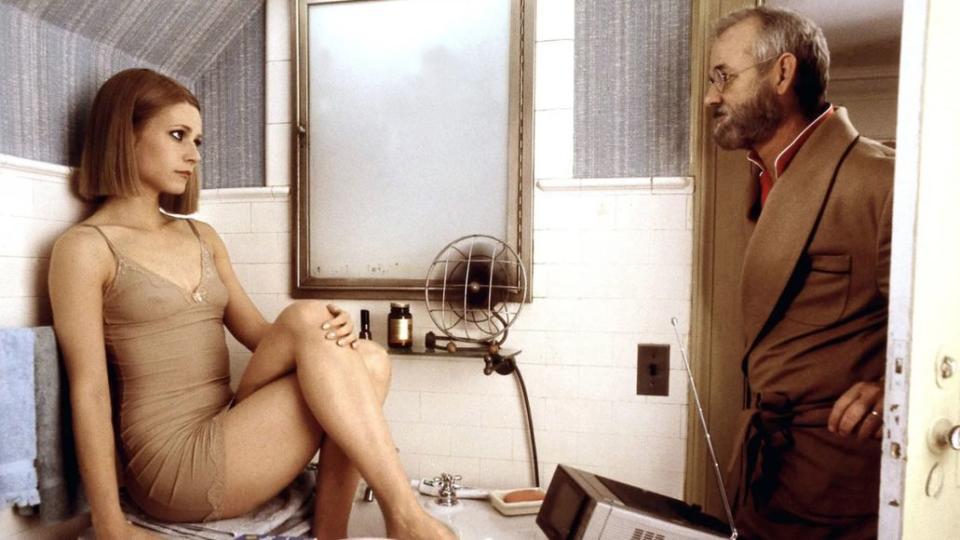
The Royal Tenenbaums (Touchstone)
Runtime: 1 hr. 49 min.
Cast: Gene Hackman, Anjelica Huston, Luke Wilson, Gwyneth Paltrow, Ben Stiller, Danny Glover, Bill Murray, and Luke Wilson
How Is Bill Murray Involved?: As Raleigh St. Clair, neurologist and long-suffering husband of Margot, Murray is a study of bearded minimalism.
Plot: Erstwhile patriarch to a family of remarkable eccentrics, Royal Tenenbaum (Hackman) returns to make amends (?) with his regal ex-wife Etheline (Huston) and three children, Margot (Paltrow), Chas (Stiller), and Richie (Luke Wilson), and to inform them of his totally fake cancer diagnosis. The film unravels from there, examining the family’s many relationships. The long-latent romance between Richie and adopted sister Margot has become the headliner, but Royal charm-weaseling his way into the lives of Chas’ sons, Ari and Uzi, is darling, as is the blossoming romance of Etheline and her suitor, Henry Sherman (Glover). It all comes to a head via a wedding, a death, and a suicide attempt, in perhaps the most compelling modern family dramedy.
It Is Beautiful, Steve: Mark Mothersbaugh’s bubbly compositions bind together more ‘60s mania and raw-hearted singer-songwriter material. The swagger of The Clash and Ramones showcases the family’s dramatic highs, but a scene featuring Richie at his absolute lowest soundtracked by Elliott Smith (who faced his own tragic end) is one of the most breathtaking in cinema history.
How Much Kinks?: None, though contemporaries like The Velvet Underground and Ramones make up for it.
A Word on Fonts: From scenes featuring the Tenenbaum family to props explicitly created by the clan, Futura is absolutely the name of the game. But take note: books written by non-family characters Raleigh and Henry have covers using Helvetica. See! The fonts are important!
Best Doomed Love Affair: The should-they-shouldn’t-they love between Richie and Margot has spawned plenty of hipster cosplay. Sure, they’re not blood relatives since Margot was adopted, but they were raised together… But even if we’re not going to get into the incest-adjacent nature of the romance, she was married for years at the film’s start, and he was a distant, depressed mess. But their quirks find a way to make it all work somehow.
Most Problematic Fave: Sure there’s the incest thing, and then a very precious, very well-off quirky white family and their struggles, whereas Henry Sherman is a strong widower who raised a well-adjusted son, who then gets thrown a racial slur by Royal.
Most Gratuitous Set Fetishism: The house is segmented and displayed like a miniature, the most well-appointed doll house with the most eccentric dolls. Cross-section illustrations abound on Etsy, showing details ranging from Chas’ room and his dalmatian mice through to the car smashed up to the corner of the exterior.
Best Prop: Margot’s wooden finger is exactly the kind of small detail that seems superfluous and quirky for the sake of quirk, but in the end is the perfect symbol of the pain and suffering she’s endured as a member of this family, as well as her difference from those surrounding her.

Bob Gets the Spirit Award: This one has to go to Owen Wilson as a faux wildman author who wants so desperately to be a Tenenbaum. His mescaline-addled antics and desperate cries for attention are a flash of energy in the midst of the tension.
Verdict: Whether you’re looking for whimsy, desperation, romance, life, death, laughter, or tears, Tenenbaums has something to offer … hence why it’s become absolutely beloved by fans and remains a go-to on repeat. Almost every viewer can have their own character to connect with, their own strained relationship to identify with. The script was co-written with Owen Wilson, whom Anderson met in college along with his brother Luke; though all three worked immediately on debut Bottle Rocket, this film feels like the culmination of the family affair, pushing each to their heights.
The film is immensely quotable, filled with fascinating characters, and absolutely gorgeous, reveling in long-panning shots, charming montages, and exquisitely detailed sets. After relatively low-key films in Bottle Rocket and Rushmore, it’s stunning that the auteur found that formula this quickly, let alone found its apex.
— L. Phillips
01. Rushmore (1998)
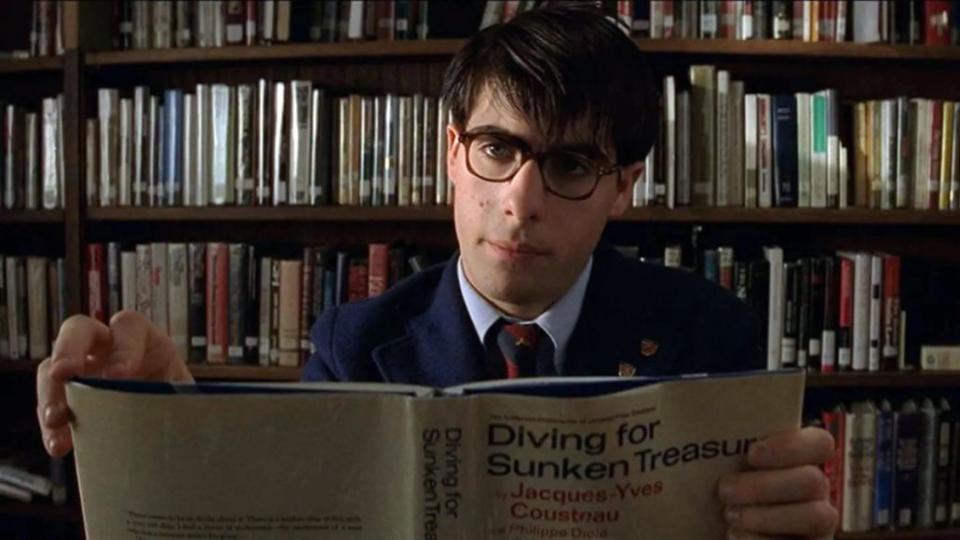
Rushmore (Touchstone)
Runtime: 1 hr. 33 min.
Cast: Jason Schwartzman, Bill Murray, Olivia Williams, Seymour Cassel, Brian Cox, and Mason Gamble
How Is Bill Murray Involved?: As Herman Blume, Murray was the best chapel speaker Max Fischer has ever seen. He took dead aim on the rich boys, indeed.
Plot: He’s one of the worst students they’ve got, so get ready to make time for him. Max Fischer (Schwartzman): teen playwright, decorated club maestro, and jack of all trades is one of Rushmore Academy’s most notorious students. He befriends — and makes enemies with — industrialist and walking midlife crisis Herman Blume (Murray). Throw in a love triangle between Max, Herman, and Max’s teacher, Rosemary Cross (Olivia Williams), along with some magnificent plays, killer cuts on the soundtrack, and a bemused, detached, and winning sense of humor, and that’s your Rushmore.
It Is Beautiful, Steve: The story goes, Anderson originally wanted the film to be exclusively soundtracked by Kinks songs. Which ones specifically, we can’t say — maybe all Think Visual tunes? The point being, the film got more eclectic with The Who, The Rolling Stones, John Lennon, Faces, Vince Guaraldi, and The Creation. Anderson builds off a youth-in-revolt 1960s sound while padding the movie with sweet muzak. Rushmore’s distinctly flavored and incredibly well-used music became a calling card for Anderson and put him in the pantheon of nerd-boy directors whose playlists you had to have.
Also, for our money, “Making Time” is right up there in the pantheon of greatest-ever movie music cues. Like “Layla” in Goodfellas or “(We’re Gonna) Rock Around the Clock” in American Graffiti, “Making Time” is permanently intertwined with Rushmore. The Creation song strikes like comic lightning, placed with precision over Max’s epic montage of clubs.
How Much Kinks?: Oh, just the one time, and boy does Anderson make it count. Granted, Bill Murray’s Budweiser bathing suit nearly takes the scene, but it’s The Kinks’ “Nothin’ in the world can stop me worryin’ ’bout that girl” that brings the whole scene together. Like pure, smooth depression.
A Word on Fonts: Do ya think it was the clubs montage that got people all obsessed about Wes Anderson and the Futura font? Can’t swing a dead cat without hitting mediocre “WHAT IF WES ANDERSON DIRECTED” videos online with on-the-nose text and titles. Anyways, enjoy the spoils of Max Fischer’s many adventures.
Best Doomed Love Affair: Oh, Max, Herman, and Rosemary are never going to be happy. Max’s adolescent crush for Rosemary’s just, well, that can’t happen. And the married Herman desperately, albeit successfully, wooing Rosemary just stinks of clichéd desperation. This triangle was never going to let anyone leave it truly happy. But the boyish fights are worth it alone. And at least things end on a level of acceptance and understanding?
Most Problematic Fave: While we could ding Max’s insufferably pompous and socially awkward demeanor, he’s grown on audiences over time. He’s the Holden Caulfield of the ‘90s, you could say. The boy you hate to love. Nah, the most problematic fave came behind the scenes in the form of Anderson trying to appeal to his boyhood hero Pauline Kael. Anderson managed to privately screen the film for the then-80-year-old critic who was being treated for Parkinson’s, and alas, she was confused by Rushmore. So Anderson met her, she palled… but at least it was bittersweet. She recommended the film.
Most Gratuitous Set Fetishism: Gawsh, is it the obsession with chalkboards and handwriting, or is it Max’s hyper-elaborate ‘70s film ripoffs? The diligent and detail-obsessed habits of Max Fischer?
Best Prop: Props, rather. It’s small, and Murray probably improvised this, but, can you smell the desperation on Blume’s two cigarettes?

Bob Gets the Spirit Award: Man, give it to Luke Wilson as Dr. Peter Flynn for setting up the movie’s best, albeit easiest, one-liner.
Verdict: Early in Rushmore, Blume somewhat snarkily asks Max Fischer what his secret is. How he carries on. Makes clubs. Lives his life. Max, very assuredly pulls the old “find what you love and do it for the rest of your life” line, and curiously enough, it sticks with Herman Blume. Even funnier, one can argue that is exactly what Wes Anderson did when he made Rushmore. The best of the Texas wunderkind was all right there, perfected, and ready for audiences very early in his prolific career.
This was Wes Anderson quickly and assuredly formed as a director of great vision and idiosyncratic interests. The laconic screwball comedy, the angst, the delectable imagery, the propensity for detail, literature, youth, Bill Murray, and the tragic, awful, and yet still somewhat amiable characters. It’s all there, and it’s the syllabus through which Wes Anderson has successfully reinvented himself over the last 20-odd years.
And it’s still his best. We love Rushmore. We love Max Fischer. We love how Wes Anderson — with the aid of Owen Wilson on the script — perfectly distilled the agony and the ecstasy of being young through comic means, petty squabbles, and great music. It’s a testament to Anderson’s jam-packed aesthetic that makes Rushmore so re-watchable, but it’s his characters, their wicked behavior, and the film’s sense of humor that’s made this such a modern classic.
— B. Goble
A Definitive Ranking of Every Wes Anderson Movie
Consequence Staff
Popular Posts

